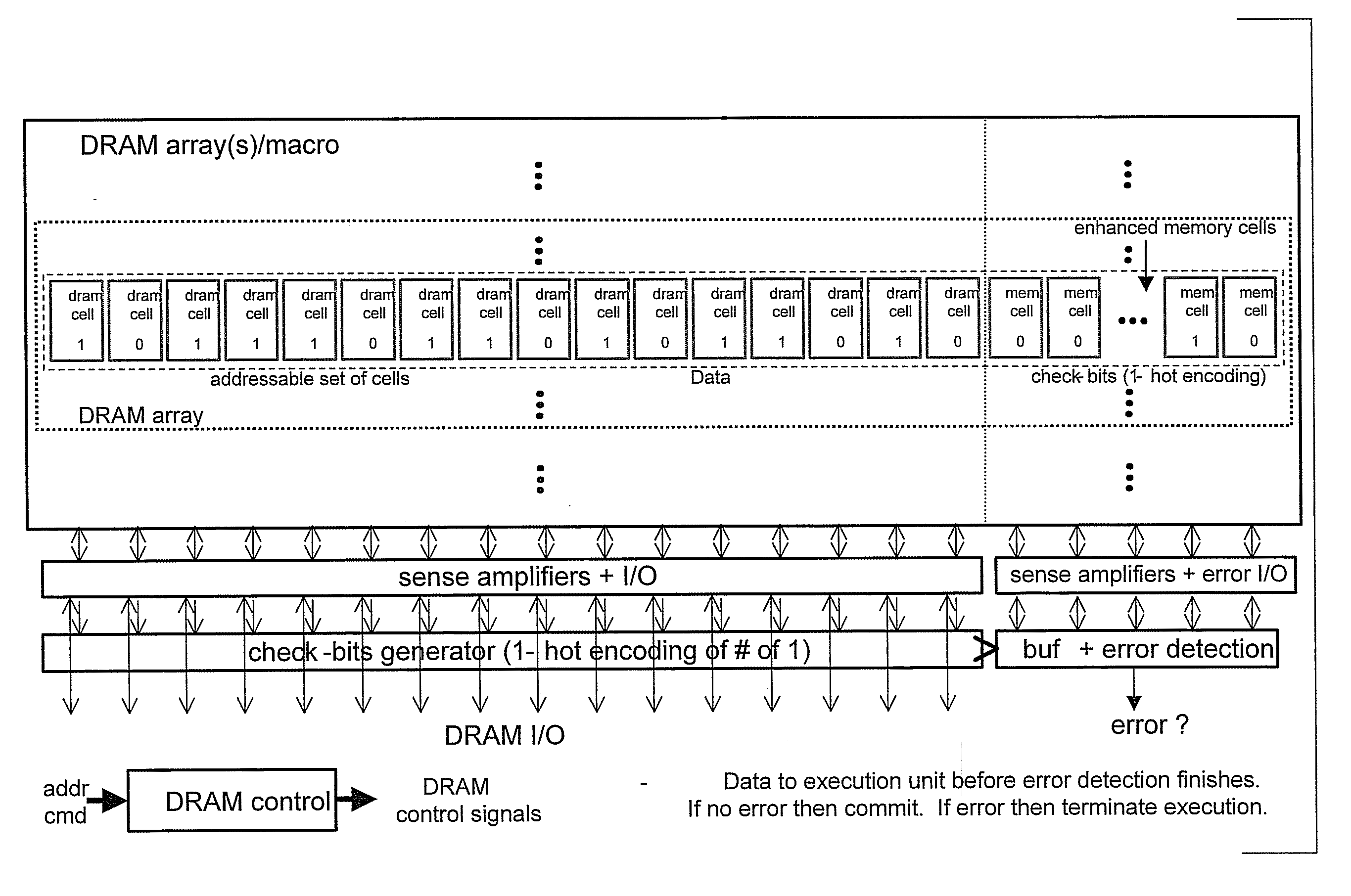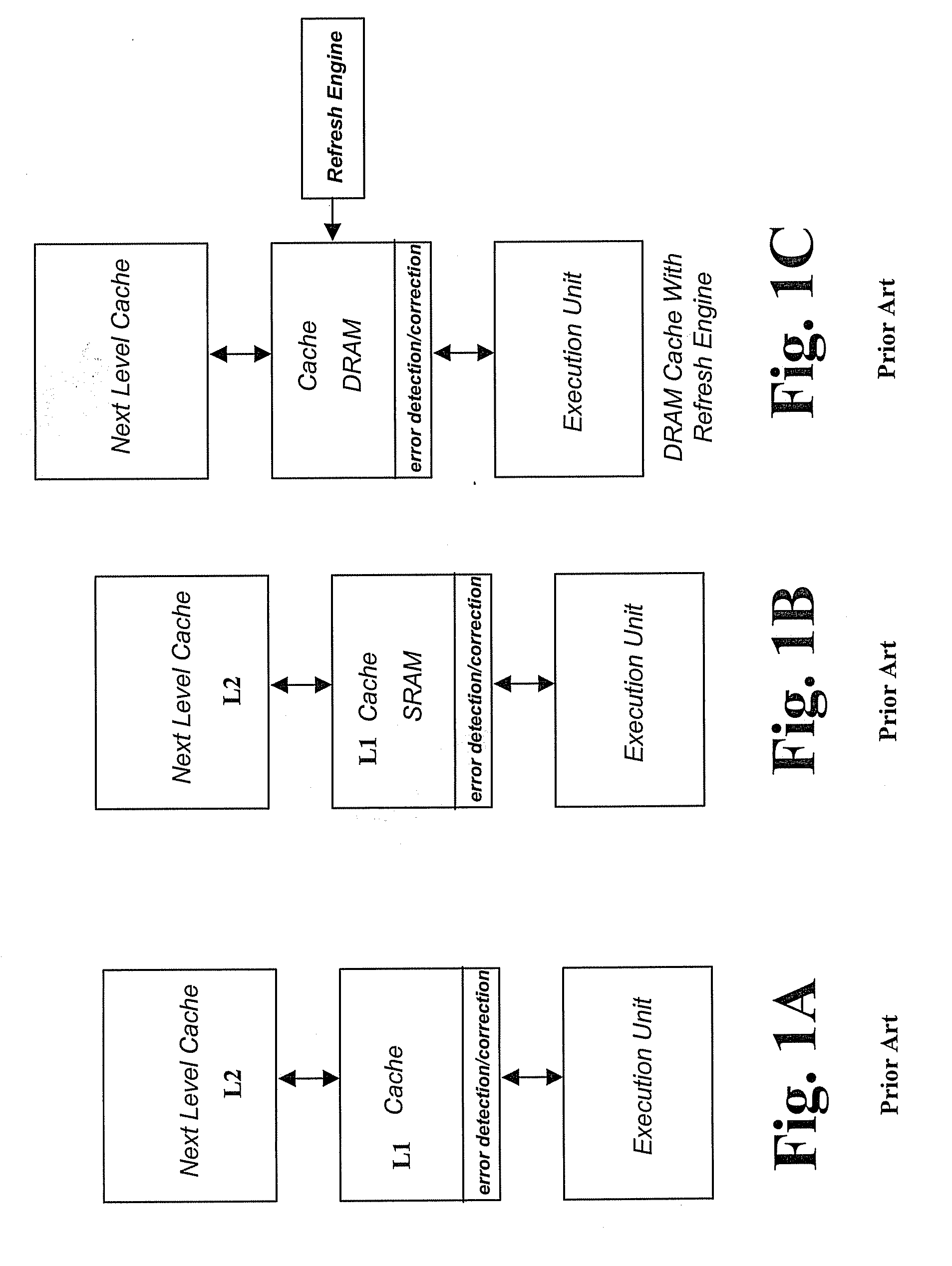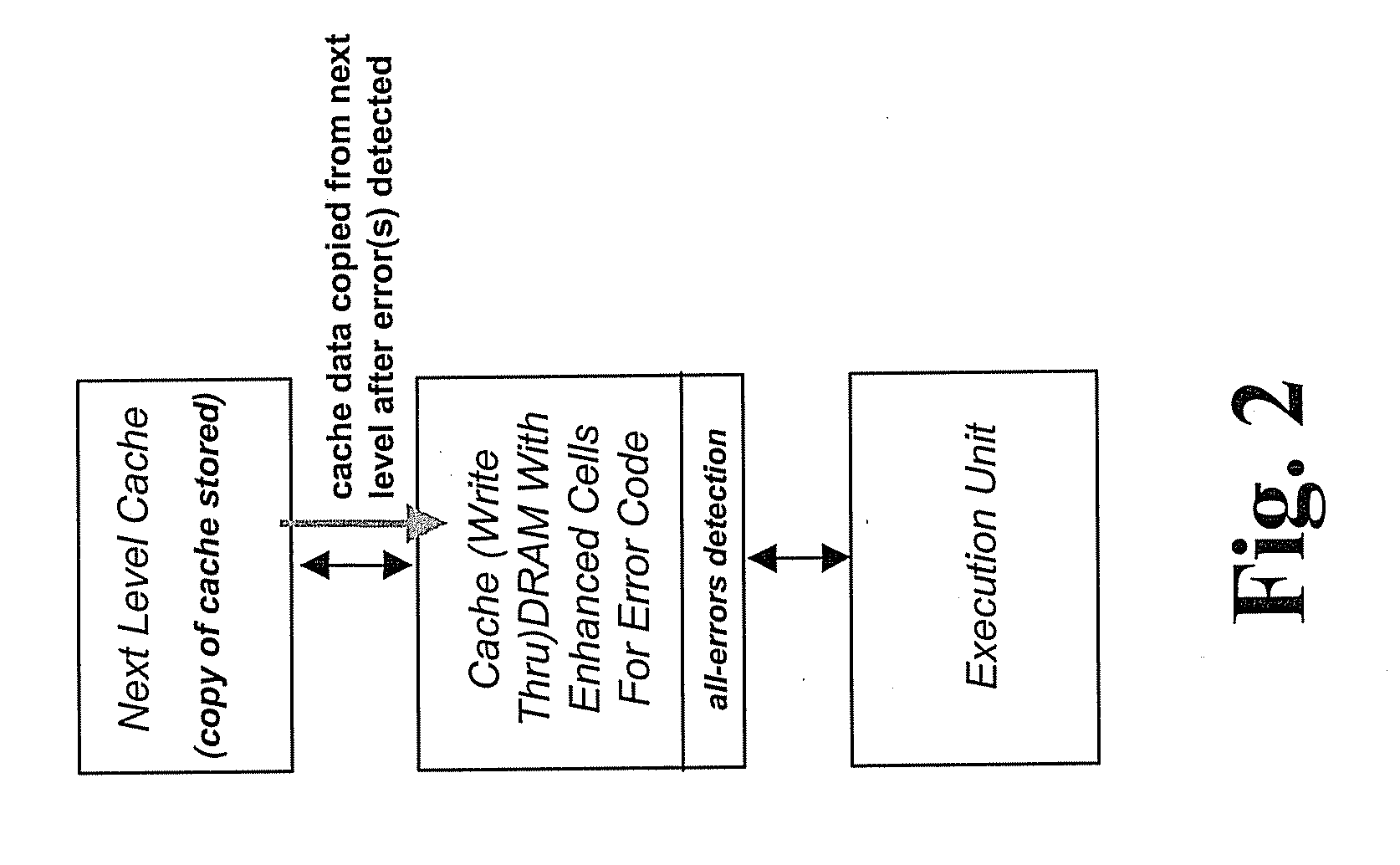Dram cache with on-demand reload
a cache and reload technology, applied in the field of new dram cache structure, can solve the problems of reducing system performance, affecting read speed, and adding a refresh cycle could contribute a relatively large performance penalty, so as to improve cache availability and reduce power
- Summary
- Abstract
- Description
- Claims
- Application Information
AI Technical Summary
Benefits of technology
Problems solved by technology
Method used
Image
Examples
Embodiment Construction
[0031]Turning now to the drawings in greater detail, based on observing the temporal behavior of data in level ‘1’ data caches for various type of (benchmark) codes, a high percent of data in level ‘1’ data caches does not remain in the cache beyond certain number of processor cycles. This number when translated into actual time (by multiplying with the cycle time of the processor) is well within the retention time that can be achieved by proper design (tradeoff) of high speed DRAMs. The underlying phenomenon that is being taken advantage of here is that data in lower level caches are either updated often, in which case they are automatically refreshed, or are usually cast out to make space for new data before the end of the retention life of the original data.
[0032]As such, here is presented a novel DRAM cache structure, the associated circuits and method of operations suitable for high-speed caches, such as write-through caches. The DRAM caches do not require regular refresh of it...
PUM
 Login to View More
Login to View More Abstract
Description
Claims
Application Information
 Login to View More
Login to View More - R&D
- Intellectual Property
- Life Sciences
- Materials
- Tech Scout
- Unparalleled Data Quality
- Higher Quality Content
- 60% Fewer Hallucinations
Browse by: Latest US Patents, China's latest patents, Technical Efficacy Thesaurus, Application Domain, Technology Topic, Popular Technical Reports.
© 2025 PatSnap. All rights reserved.Legal|Privacy policy|Modern Slavery Act Transparency Statement|Sitemap|About US| Contact US: help@patsnap.com



